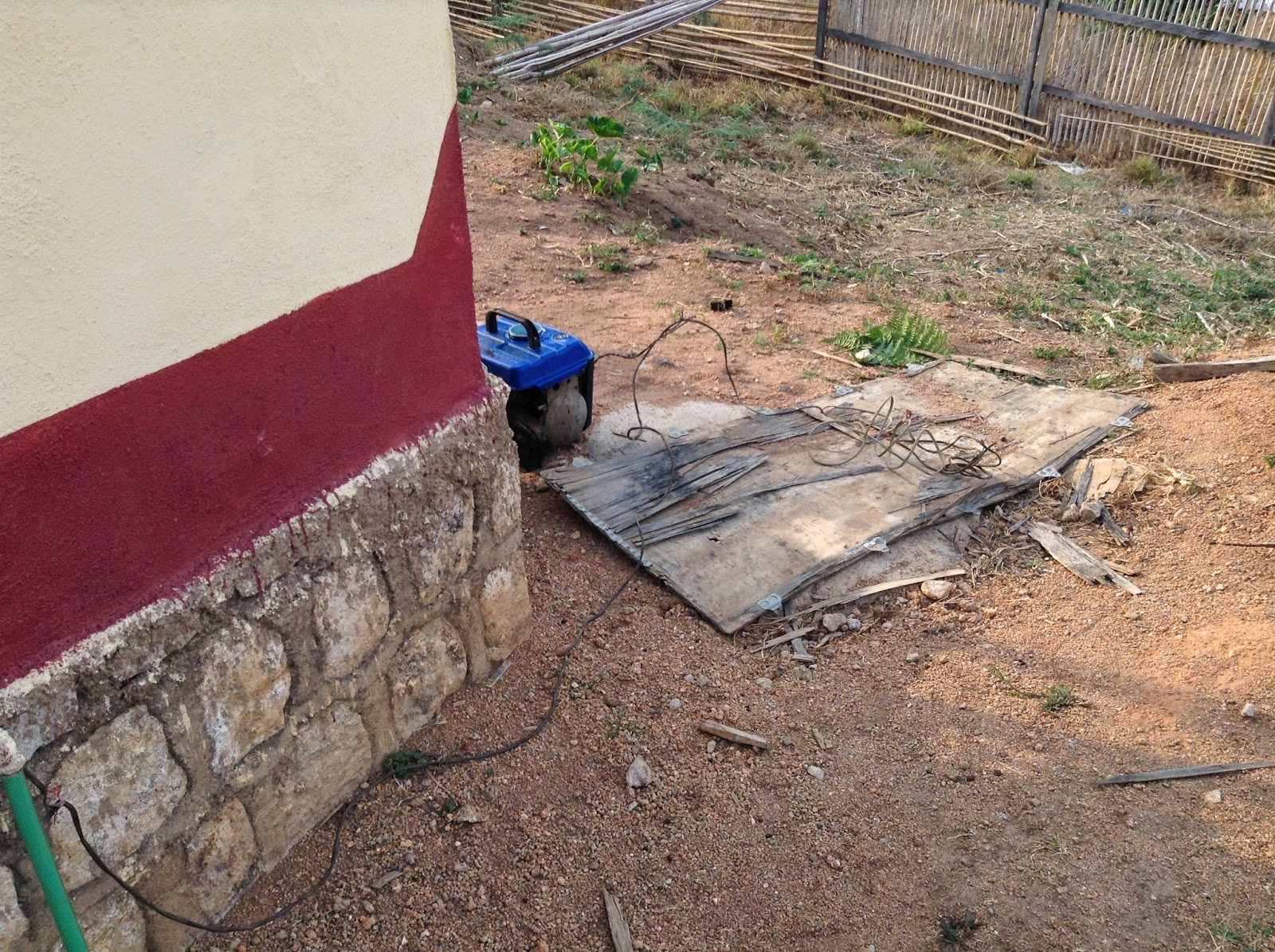There is no electricity and no cell phone reception. Light is only by "bush lamp" which is a kerosene lantern. We have a portable ultrasound that we use for patients with various complaints and for those who are pregnant. We are able to use the ultrasound battery, but this limits us to about 7 ultrasounds before the battery runs out. Many of the patients travel from even more remote villages for our once a month visit. Achain was able to connect the US to a generator and run it during one of our visits so that everyone who needed an ultrasound could have one. The connection was a bit precarious!
Recently, a very special Dutch friend of St. Martin De Porres, Peter van Leerdam, provided solar lighting for Achain. This provides a much more reliable, safe power source.






